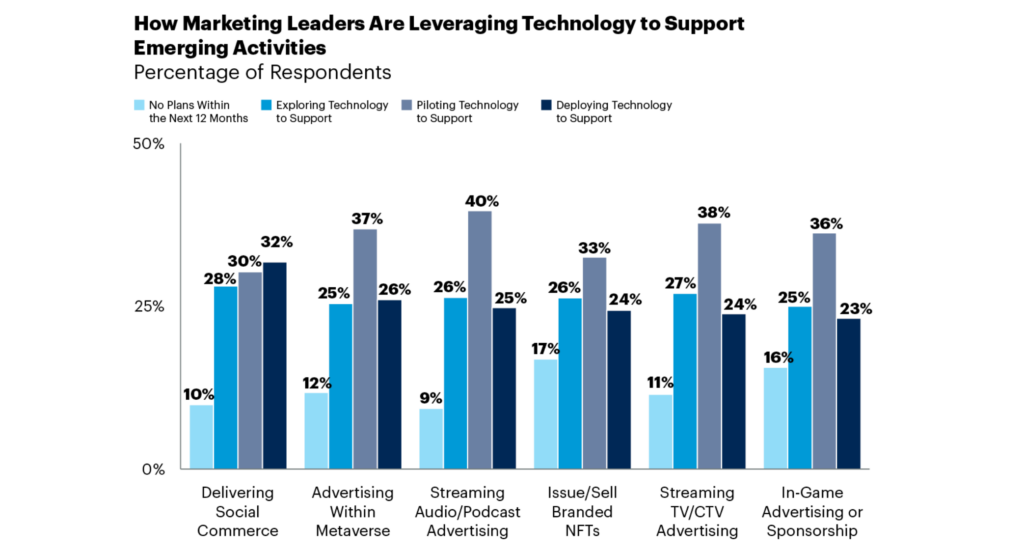Leveraging the full potential of your martech investments has been a challenge for the industry in recent years. Consider this stat from Gartner’s just-released 2022 Martech Survey: Marketers use just 42 percent of their martech stacks’ capabilities—and that’s down from 58 percent in 2020. Following are the survey’s key findings, gathered from 324 marketers in May and June of 2022, plus recommendations from Gartner on how to maximize the value of your martech investments.
Barriers to Utilization
CMOs are allocating a quarter of their marketing budgets to martech in 2022, according to Gartner research, making it all the more critical to ensure greater ROI from those investments. But challenges related to under-utilization of martech stacks are tied to numerous factors, including new business models and disrupted customer journeys, said Benjamin Bloom, VP Analyst at Gartner Marketing practice in a release. Barriers to utilization include overlap among technology solutions (30 percent of respondents), identifying and recruiting talent to drive adoption (28 percent) and the complexity of the martech ecosystem itself (27 percent).
When it comes to purchasing strategies, the majority of marketers—60 percent—are investing in an integrated suite of products, or a set of various software solutions from one supplier, compared to 42 percent one year prior. Meanwhile, just 25 percent of marketers are taking a best-of-breed approach that’s more tailored to their organization’s specific needs, down from 44 percent a year ago. Marketers are more in control of vendor evaluation than previously, the survey indicates, with 61 percent of respondents saying that marketing and IT jointly collaborate on tool selection. Further, 27 percent say that marketing controls it entirely—up from 9 percent in 2020.
Adoption of Journey Orchestration
An important strategy that investment in marketing technology can support is customer journey orchestration, or the coordination of customer experiences across multiple touchpoints to encourage engagement. It’s a top priority for CMOs in 2022, according to Gartner research, but just 20 percent reported successful implementation across the end-to-end journey. However, 60 percent are preparing to implement or have partially implemented the strategy—and 94 percent expect to be pursing it within two years.
Emerging Martech Tools
In terms of new types of technology investments to support innovation, the survey found that streaming audio or podcast advertising was on the rise, with 65 percent of respondents saying they have deployed this technology or have already done so. Other tools include advertising within the metaverse (63 percent), social commerce (62 percent), streaming TV or CTV advertising (62 percent), in-game advertising (59 percent) and creating branded NFTs (57 percent).
To create more value for companies’ martech investments, Gartner recommends several solutions:
*Incorporate martech utilization into team performance objectives and allocate resources to resolve barriers to adoption.
*If an integrated suite approach is applied to purchasing, consistently examine and validate vendors’ ability to support your desired martech objectives.
*Collaborate more closely with IT teams to support customer journey orchestration.
*Pursue long-term, in-house development of emerging technology tools rather than allocating investment to agencies or service providers by default, and include this capability within your martech roadmap in order to improve ROI.






